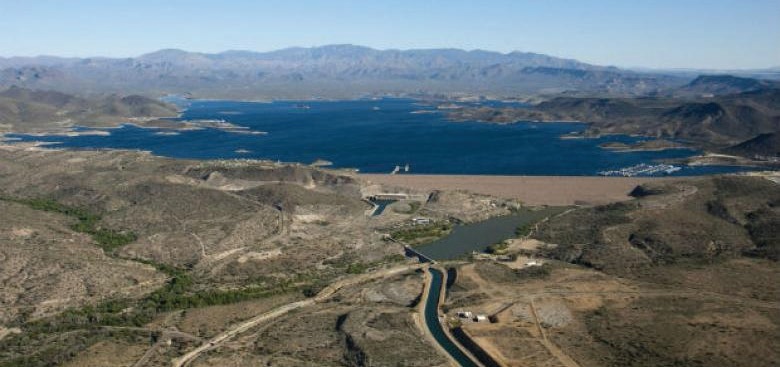Evaporation as an alternative energy source
Dr. Neil Canter, Contributing Editor | TLT Tech Beat February 2018
A new model evaluates the potential for generating power by placing evaporation engines in natural fresh water sources.
KEY CONCEPTS
•
Evaporation represents a different approach for using water as an energy source.
•
A model developed found that 325 gigawatts of power can be generated through using evaporation on all fresh water surfaces in the U.S. greater than 0.1 square kilometer, except for the Great Lakes.
•
The model determined that more energy can be realized from evaporation in drier, sunnier, warmer climates than cooler, wetter climates.
IN THE SEARCH FOR DEVELOPING ALTERNATIVE ENERGY SOURCES to petroleum, this column continues to monitor developments in wind energy and solar power. Research to determine if water can be harnessed in some fashion as an energy source also has been underway. One motivation is that water occupies 71% of the Earth’s surface, according to the U.S. Geological Survey (
1).
Almost all of the water (96.5%) is contained in Earth’s oceans, which contain varying degrees of salinity. Researchers have been working to use differences in salinity as a means to generate power. In a previous TLT article, the salinity difference between fresh water and seawater was used to produce power using a concentration flow cell where water with a high salinity content flows past one electrode, and water with a low salinity content flows past a second electrode (
2). The average power density achieved was twice what was reported previously.
A different approach for using water as an energy source is evaporation. Dr. Ahmet-Harndi Cavusoglu, associate director, Academic Venture Exchange and formerly a graduate student in the department of chemical engineering at Columbia University in New York City, indicates that evaporation is a key part of the water cycle. He says, “The water cycle describes how water moves through the Earth’s atmosphere. Initially, water condenses and is released onto the Earth as rain (or snow). The water then moves into rivers which then empty into lakes and oceans. This process also occurs on land as water is absorbed into soil. In the final step, water evaporates back into the air completing the cycle.”
The possibility exists that evaporation of water may be used as a way to produce energy. Cavusoglu says, “The rate of evaporation’s energy transfer or flux was determined to be 80 watts per square meter on average globally. This is a measure of how energy flows up into the atmosphere and then down onto the Earth’s surface.”
The significant amount of potential power available from evaporation has been examined by Ozgur Sahin, associate professor of biological sciences and physics at Columbia University. Sahin and his research group have developed an evaporation engine to generate energy in the laboratory (
3).
Cavusoglu describes how the evaporation engine works, “An evaporation engine would be placed above a body of evaporating water and acts in a similar manner to a greenhouse over a body of water such as a lake. This device would contain a hygroscopic material that grows and shrinks when in contact with moisture, sandwiched between shutters on top of the engine facing the atmosphere and shutters below in contact with the water surface. In the first step, the upper shutters are closed while the bottom shutters open, enabling water at its highest chemical potential to be absorbed into the engine causing the transparent material to swell. Then the upper shutters open and the lower shutters close, which allows the hygroscopic material to shrink releasing water at a lower chemical potential, thus, generating energy from the difference in chemical potential.”
The cycle then repeats itself.
With this background, Cavusoglu and his colleagues then developed a model to evaluate the potential for generating power in the U.S. by placing evaporation engines in natural fresh water sources.
DRIER CLIMATES FAVORABLE
Cavusoglu, Sahin and their co-workers developed a model to demonstrate the potential for using evaporation to generate energy in the contiguous U.S. Cavusoglu says, “We evaluated the energy flux that can be generated on all fresh water surfaces that are greater in area than 0.1 square kilometer, except for the Great Lakes. The assumption is made that each of these water surfaces is completely covered with an evaporation engine.”
The researchers calculated that 325 gigawatts (2.85 billion megawatt hours per year) of power can be generated from evaporation. A secondary benefit is that the reduction in evaporation will lead to the recovery of an additional 96.4 billion cubic meters of water per year, which is extremely important, particularly in drier climates. The potential power obtained through evaporation is greater than electrical power generation in 15 of the 47 U.S. states evaluated.
The weather in a specific location played a significant role in the amount of power the model predicted can be produced through evaporation. Cavusoglu says, “We found that more evaporation energy can be generated from water sources in drier, sunnier, warmer climates than those in cooler and wetter climates. One other factor is that changes in the seasons also will impact power generated as more will be produced in the summer than in the winter.”
This means that locations such as Phoenix, Az., which is serviced by the reservoir shown in Figure 3, could benefit greatly from evaporation. Cavusoglu points out that locations such as Minnesota also will benefit for a different reason. He says, “Minnesota has a cooler climate that inhibits evaporation energy but compensates for this negative characteristic due to the large number of lakes present. Our model calculated that a large amount of evaporation energy can be generated even though the efficiency as measured by watts per square meter is low.”
 Figure 3. A reservoir located near Phoenix, Az., is in a dry, sunny, warm climate that appears to be advantageous for generating power through the use of evaporation. (Figure courtesy of Columbia University.)
Figure 3. A reservoir located near Phoenix, Az., is in a dry, sunny, warm climate that appears to be advantageous for generating power through the use of evaporation. (Figure courtesy of Columbia University.)
While producing power from evaporation can be done as needed and is not directly reliant on the sun or the wind in the case of wind energy and solar power, Cavusoglu envisions evaporation to be a supplemental renewable energy source. He says, “We feel that evaporation energy is an extra tool in the tool box and complementary with other energy sources.”
Future work for Sahin’s group will involve scaling up the evaporation engine. Additional information on this model can be found in a recent article (
4) or by contacting Sahin at
sahin@columbia.edu.
REFERENCES
1.
Please click
here.
2.
Canter, N. (2016), “New approach to generate power from salinity differences in water,” TLT,
72 (12), pp. 12-13.
3.
Chen, X., Goodnight, D., Gao, Z., Cavusoglu A., Sabharwal, N., DeLay, M., Driks A. and Sahin, O. (2015), “Scaling up nanoscale water-driven energy conversion into evaporation-driven engines and generators,”
Nature Communications,
6, Article Number: 7346.
4.
Cavusoglu, A., Chen, X., Gentine, P. and Sahin, O. (2017), “Potential for natural evaporation as a reliable renewable energy resource,”
Nature Communications,
8, Article Number: 617.
 Neil Canter heads his own consulting company, Chemical Solutions, in Willow Grove, Pa. Ideas for Tech Beat can be submitted to him at neilcanter@comcast.net
Neil Canter heads his own consulting company, Chemical Solutions, in Willow Grove, Pa. Ideas for Tech Beat can be submitted to him at neilcanter@comcast.net.